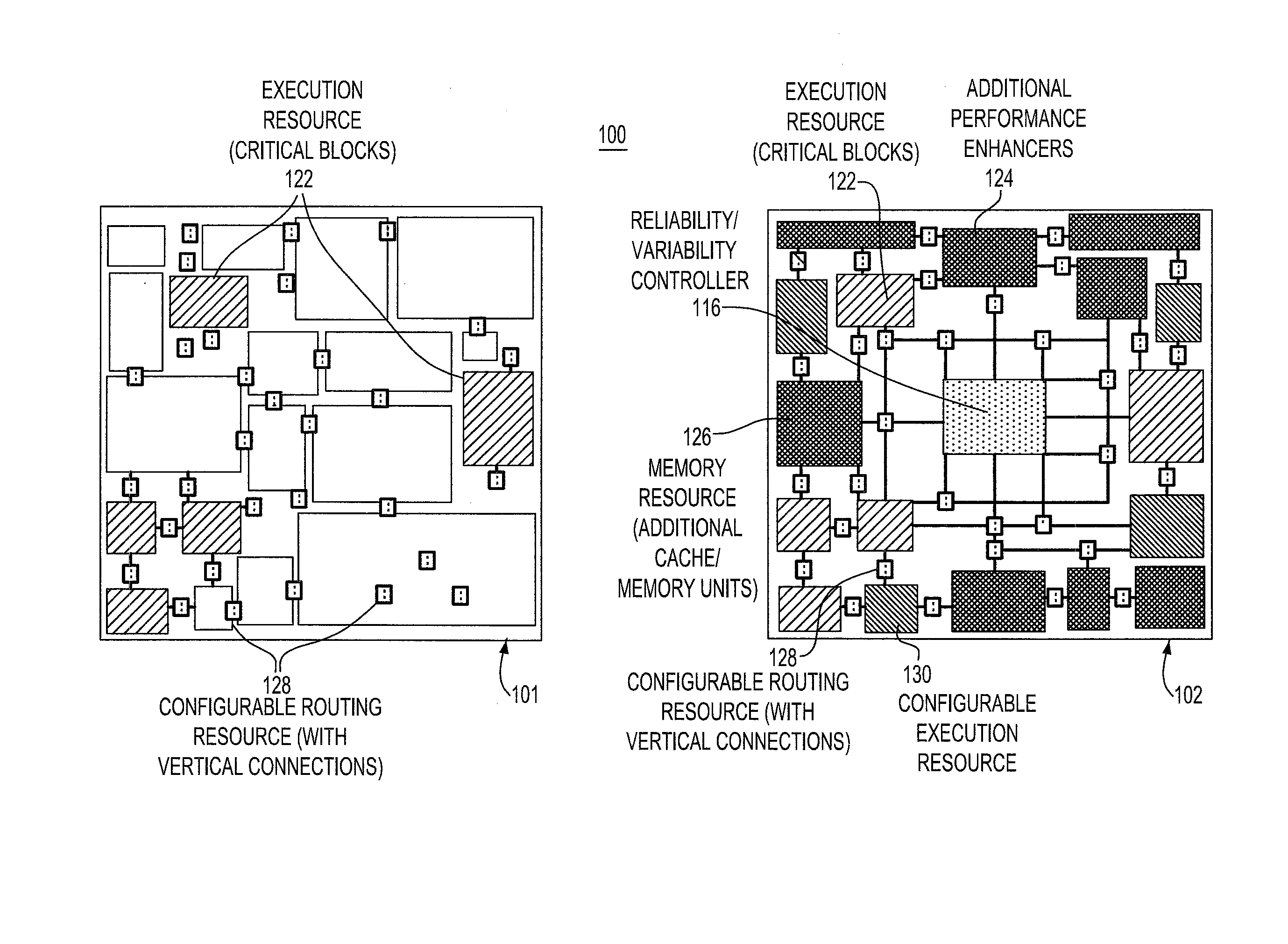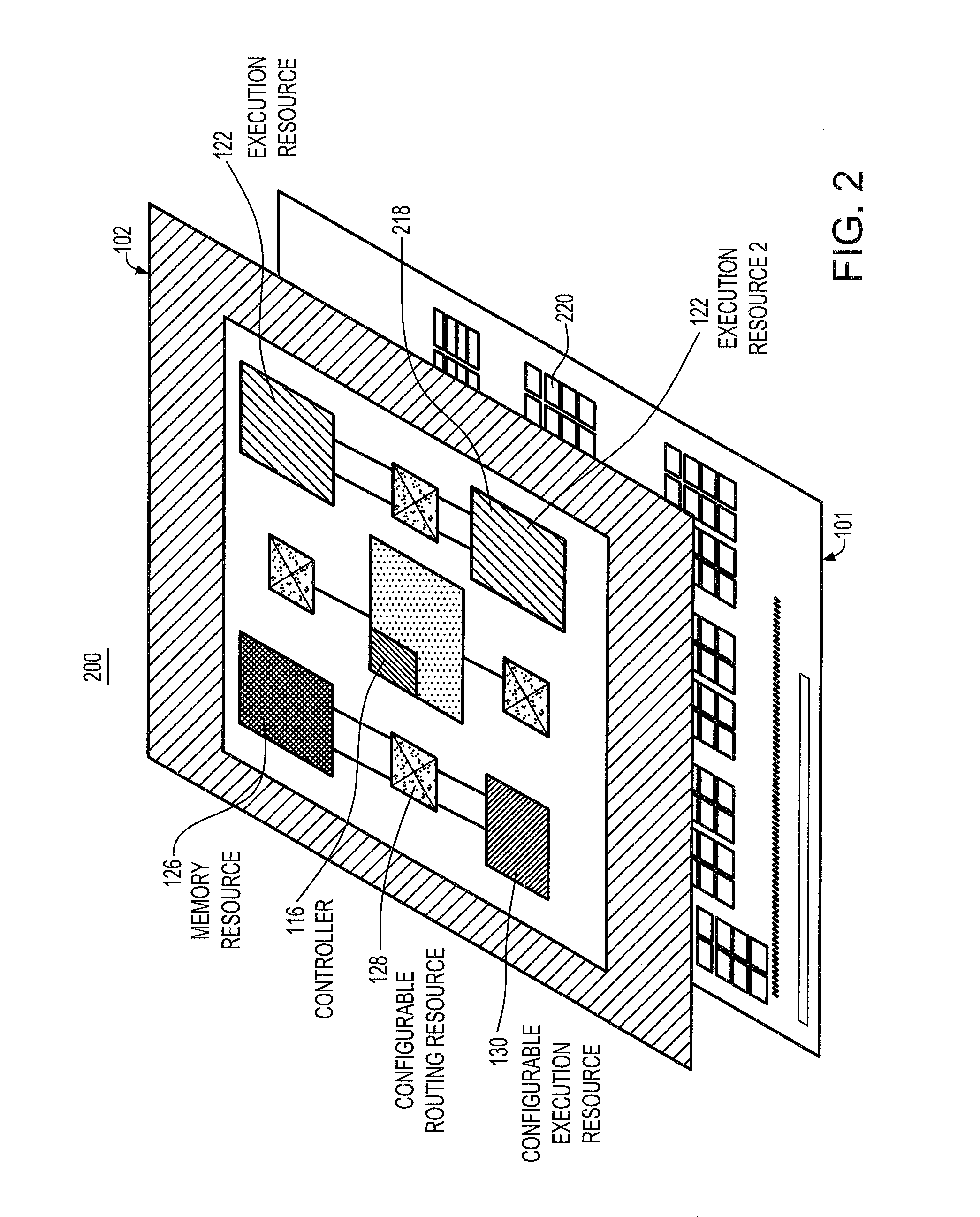Method and on-chip control apparatus for enhancing process reliability and process variability through 3D integration
a technology of process reliability and process variability, applied in the field of control methods and on-chip controllers for enhancing semiconductor chip process variability and lifetime reliability, can solve the problems of limiting the applicability of methods in practice, increasing complexity, and increasing the cost of process variation in technologies, so as to facilitate the implementation of methods, improve the design of integrated circuits, and alleviate lifetime reliability and process variability problems.
- Summary
- Abstract
- Description
- Claims
- Application Information
AI Technical Summary
Benefits of technology
Problems solved by technology
Method used
Image
Examples
Embodiment Construction
[0017]Pursuant to the method for enhancing lifetime reliability and / or performance that uses 3D integration, there are employed at least two chips where the first chip is a microprocessor. The second chip consists of a set of execution / memory resources configurable as either redundant resource for the microprocessor and microcontroller for managing and reconfiguring the resources in response to detection of a need for replacing a resource in the first chip in a sequence of steps where as a first step the pool of existing execution or memory resources is scanned to find an eligible replacement for the resource marked for replacement. If the eligible resource is not available, one of the reconfigurable resources is configured to replace the resource that is marked for replacement. Hereby, one or more of the execution / memory resources in the second chip is configured to work as a performance enhancer for one of the resources in the first chip (such as a second pipeline in the auxiliary...
PUM
 Login to View More
Login to View More Abstract
Description
Claims
Application Information
 Login to View More
Login to View More - R&D
- Intellectual Property
- Life Sciences
- Materials
- Tech Scout
- Unparalleled Data Quality
- Higher Quality Content
- 60% Fewer Hallucinations
Browse by: Latest US Patents, China's latest patents, Technical Efficacy Thesaurus, Application Domain, Technology Topic, Popular Technical Reports.
© 2025 PatSnap. All rights reserved.Legal|Privacy policy|Modern Slavery Act Transparency Statement|Sitemap|About US| Contact US: help@patsnap.com



